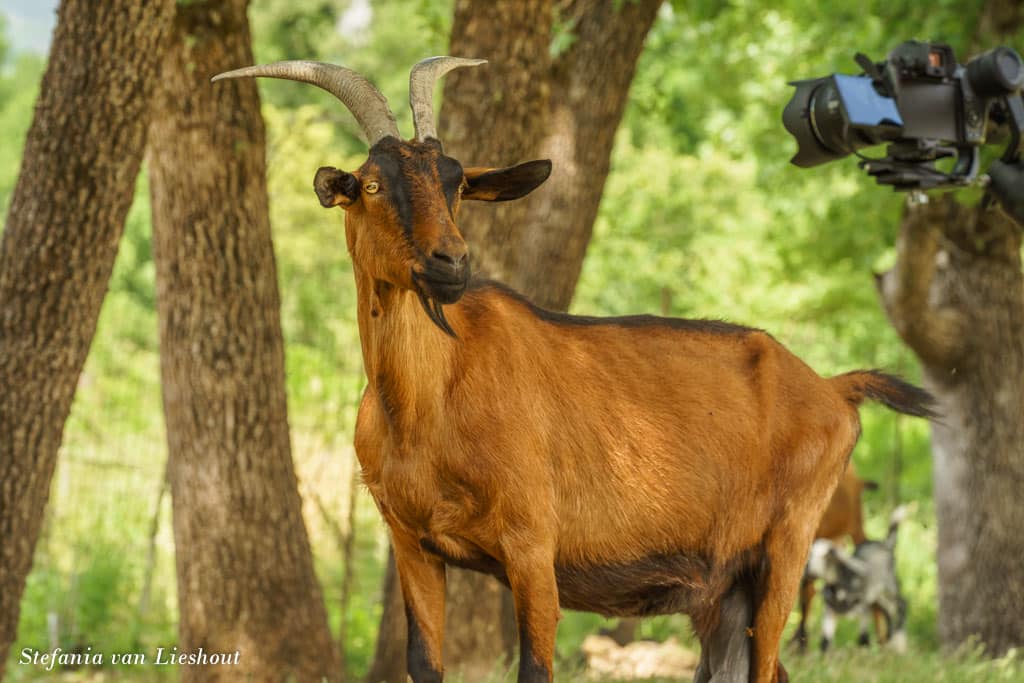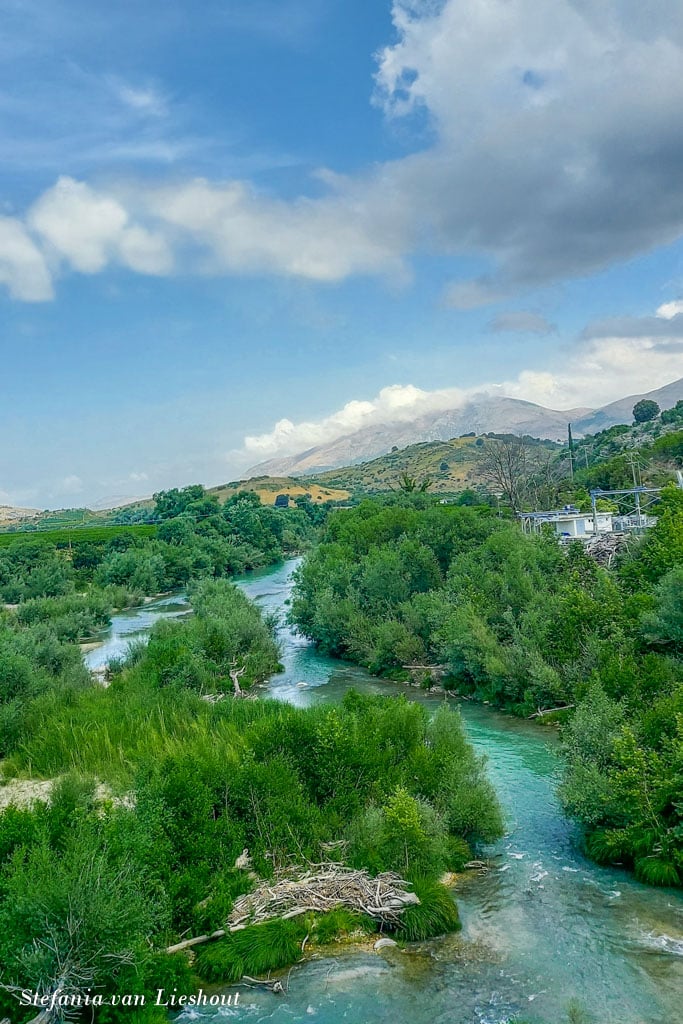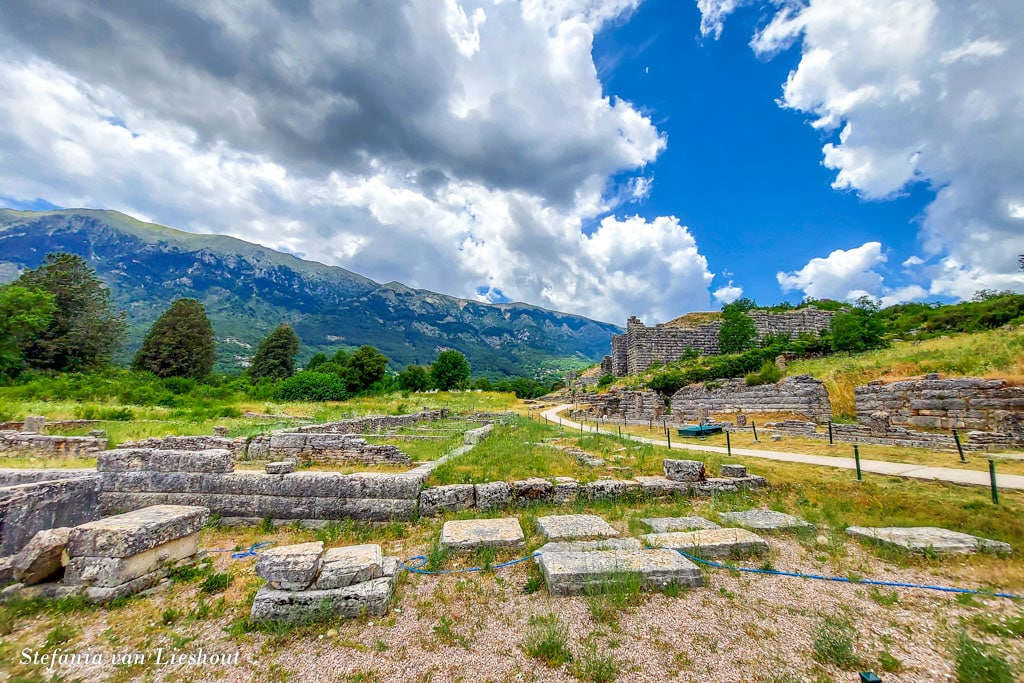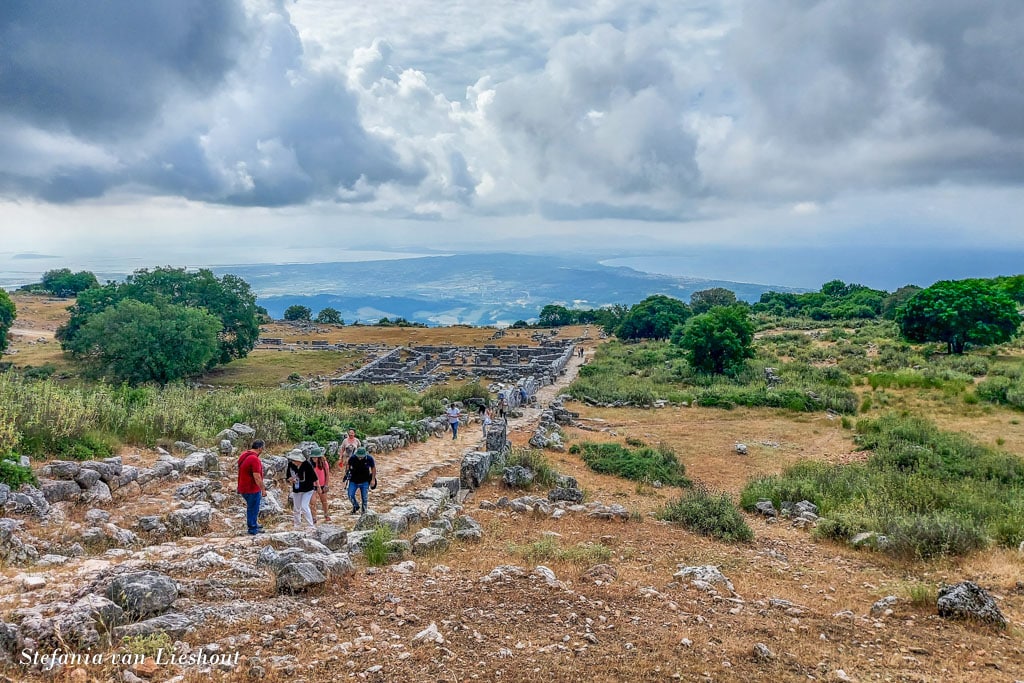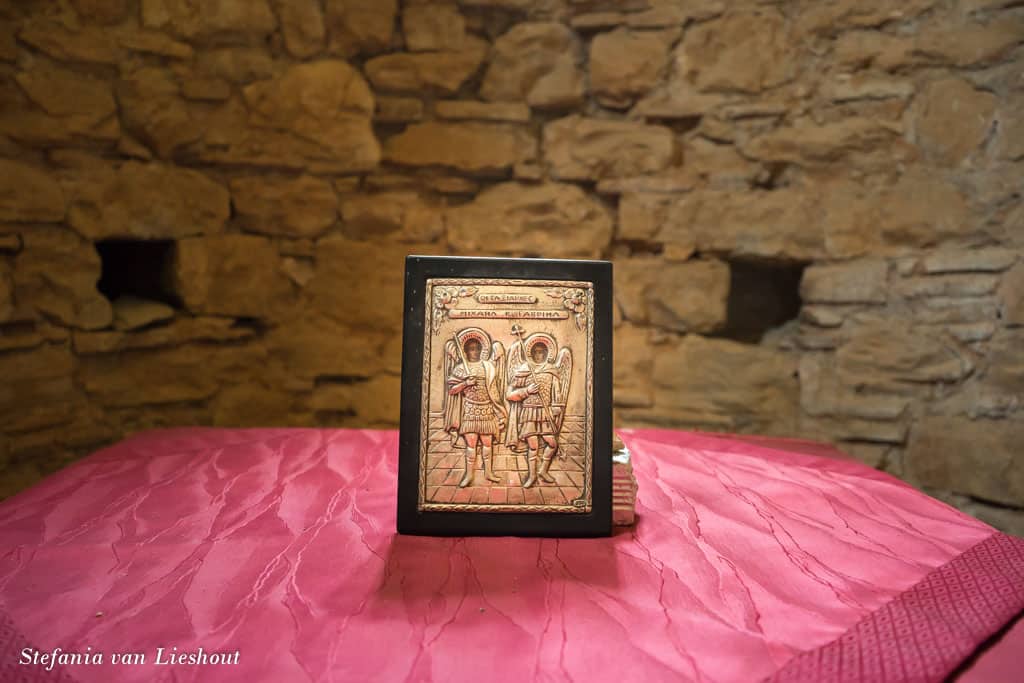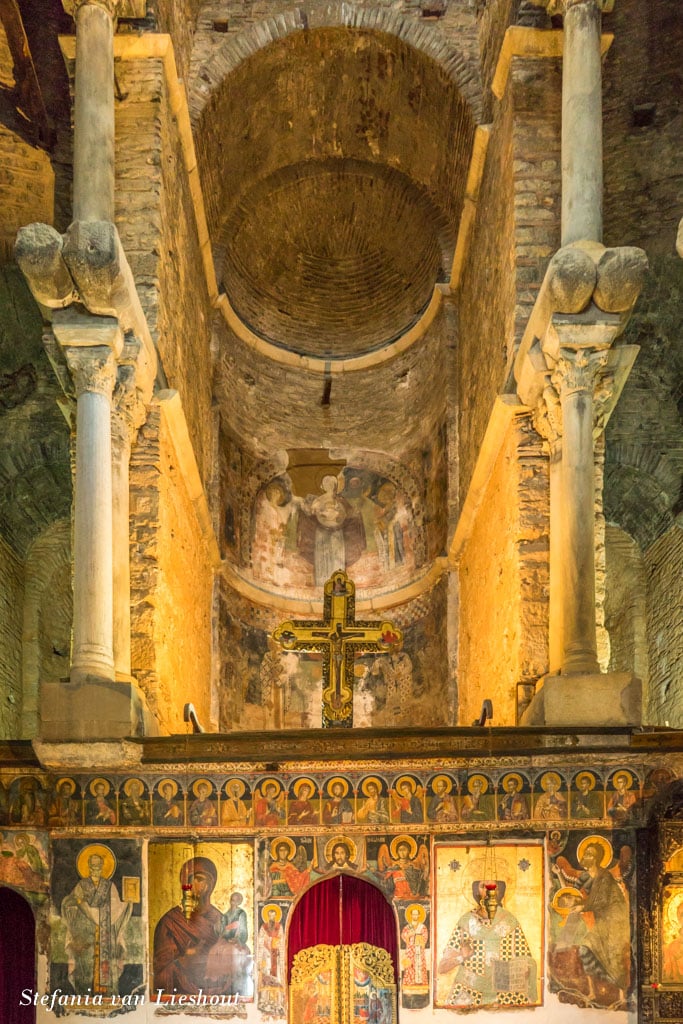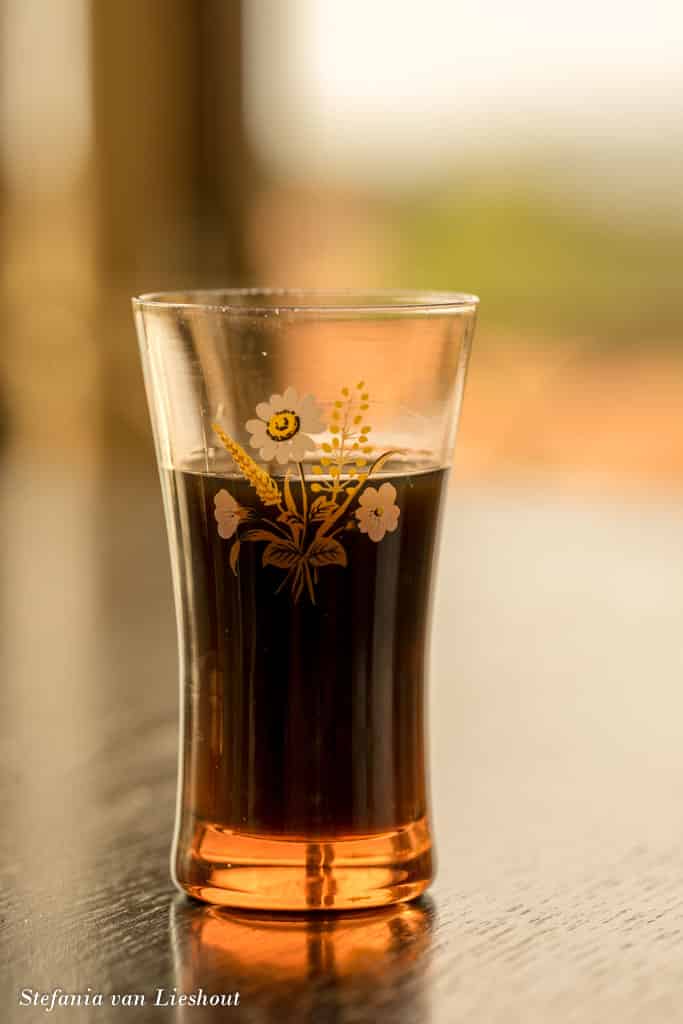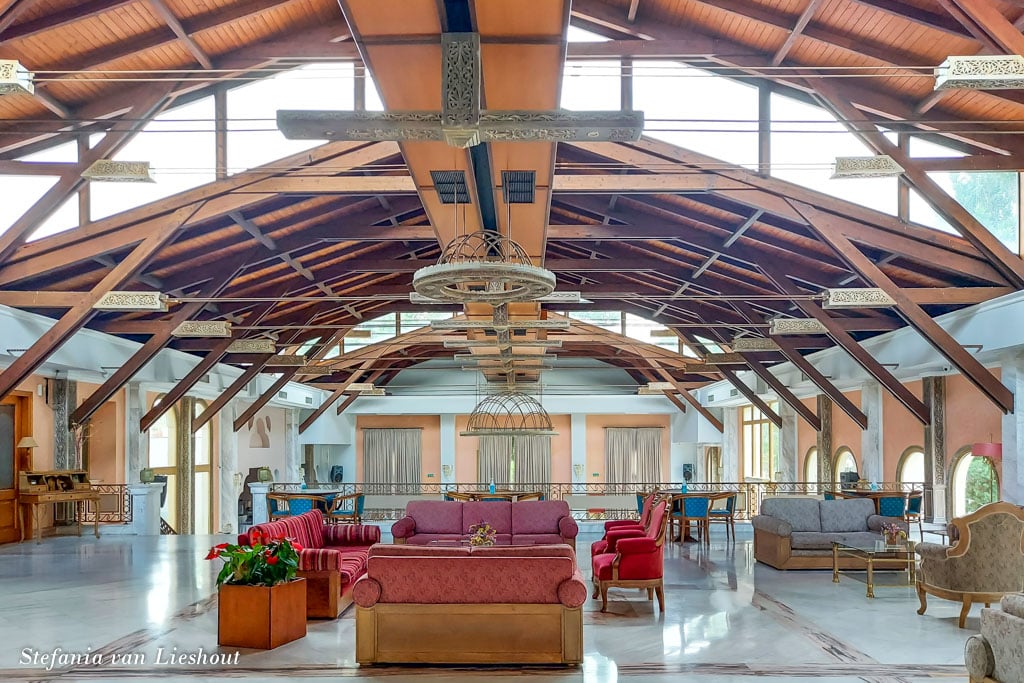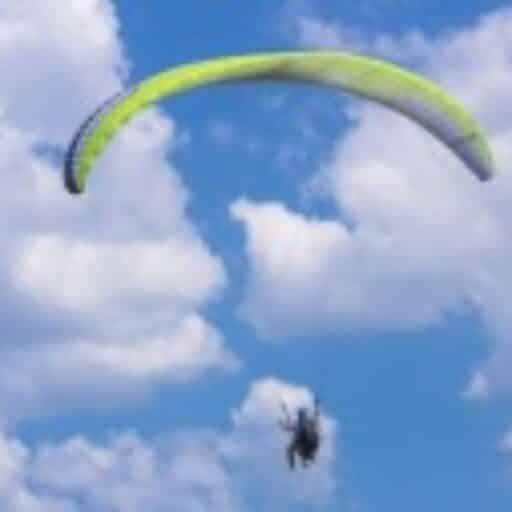
Epirus, a rugged countryside
Epirus in Northern Greece
Epirus is Greece without mass tourism. Foreign tourists are few and far between even though the Ottomans, the old Romans and Byzantines all left their monumental traces in this rugged landscape. What’s more, Greeks are sparse as well. Inland there are more goats, turtles, brown bears and wolves than people. The animals are sheltered from view by oleanders, cypresses, and olive and lemon trees.
Epirus covers 9,203 km², approximately seven per cent of England’s size. However, the region is sparsely populated, with a density of only 37 people per km2. By comparison, England is eleven times more densely populated.
The Epirus Coast
The coastal system consists of lagoons, swamps, sandy beaches, dunes, fishing villages, picturesque coves and archaeological sites. Leatherback turtles swim in the clear blue waters of the Ionian archipelago. The endless sandy beaches of Epirus near Preveza are the ideal place for a gin & tonic at sunset. Furthermore, the Ambracian Gulf is great for spotting the rare Dalmatian pelican.
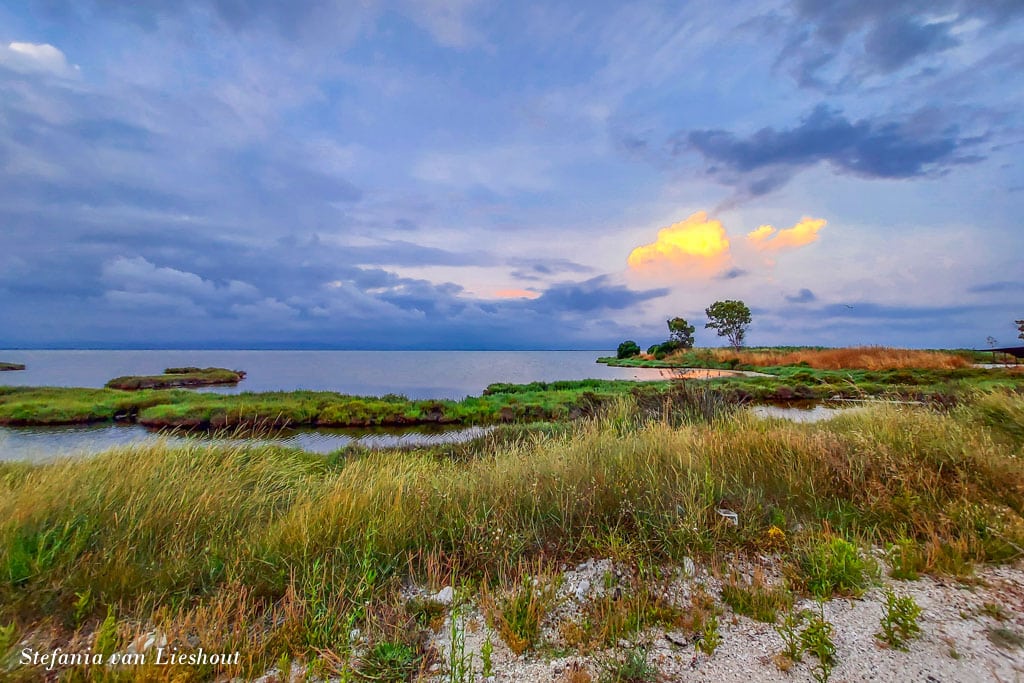
Amvrakikos Gulf Koronisia
The region of Epirus in Greece
Epirus borders the Ionian Sea to the west and Albania to the north. To the east are the regions of Thessaly and Western Macedonia.
Historically Epirus extended far into Albania. Even today, part of Epirus lies in Albania. The Greek Epirus is divided into four subregions: Thesprotia (Θεσπρωτία), Ioannina (Ιωάννινα), Preveza (Πρέβεζα) and Arta (Άρτα).

Amvrakikos Gulf Preveza
Epirus Accessibility
The good news and bad news is that Epirus is not that easy to get to.
That is why there are still relatively few tourists. Moreover, the local tourist industry is still relatively undeveloped. But that is precisely the allure of the region.
- The regional airport is in Ioannina, for international flights you first have to go to Athens.
- On the other hand, the short distance from the Epirian seaside resorts to the port of Igoumenitsa makes it easily accessible to visitors by ferry from Italy and the island of Corfu. Ferries from Italy arrive in Igoumenitsa: Bari, Ancona, Venice and Brindisi. Within Greece, ferries go to Corfu, Patra and Paxi.
- From Tirana, Albania, one can drive to Ioannina in four hours by car. It takes four and a half hours by car from Athens.
- Unfortunately, using public transport will take a whopping 11 to 15 hours.
The history of Epirus in a nutshell
Epirus is now part of Greece, but that has not always been the case. The area has been divided, merged, subjugated and/or liberated (depending on who is asked) in the last 4000 years by the Ottomans, Byzantines, Serbs, Turks, Albanians, Bulgarians and Romans. I have tried to summarise the regional history below. And yes, that is by cutting corners. For a more detailed description, see Wikipedia.
Antiquity and the Middle Ages
Pyrrhus, he of the Pyrrhic Conquest, became ruler of an independent Epirus in 295 BC. He expanded the sanctuary and oracle of Dodona, the most famous oracle in Greece after Delphi. In addition, he built a new quarter at Ambracia, present-day Arta, where he made his capital.
In the 2nd century BC, Romans took power. Thus the region became part of the Roman province of Macedonia. The area fell under the Byzantine regime at the end of the 4th century AD. Bulgarians were briefly in charge around the 9th and 10th centuries. Finally, in the middle of the 14th century, the Albanians and the Serbs alternately occupied the region.

Aslan Pasha mosque
Greek Enlightenment
Between the 16th and 19th centuries, under the Ottomans, Ioannina was the centre of the Modern Greek Enlightenment. Then, in the 18th century, Epirus came under the rule of the Albanian Muslim governor, Ali Pasha. After that, the Ottomans reigned again until Epirus was ‘liberated’ from Ottoman rule in 1912-13.
The ‘liberation’ resulted in the forced deportation of about two million people, about half a million Turks and two million Greeks (source). Historians have described the exchange as a legalised form of ethnic cleansing. The deportations were not based on language or ethnicity but on religious identity. Turkey’s Armenian and Turkish-speaking Orthodox Christian peoples were forced to leave Turkey. At the same time, the Greeks deported the Greek-speaking Muslim citizens.
Modern times
The twentieth century saw two world wars, followed by a civil war. In 1967 there was a military coup. However, it was not until 1974 that a democratic republic was established in Greece, and since 1981 Greece has been part of the EU. However, that membership was briefly at stake in 2012 due to the potential Grexit resulting from the financial crisis. Luckily, Epirus has good relations with its neighbours and the EU today.
Greek Enlightenment
Between the 16th and 19th centuries, under the Ottomans, the city of Ioannina was the centre of the Modern Greek Enlightenment. Then, in the 18th century, Epirus came under the rule of the Albanian Muslim governor, Ali Pasha. After that, the Ottomans reigned again until Epirus was ‘liberated’ from Ottoman rule in 1912-13.
The ‘liberation’ resulted in the forced deportation of about two million people, about half a million Turks and two million Greeks (source). Historians have described the exchange as a legalised form of ethnic cleansing. The deportations were not based on language or ethnicity but purely on religious identity. Turkey’s Armenian and Turkish-speaking Orthodox Christian peoples were forced to leave Turkey. Whereas the Greeks deported the Greek-speaking Muslim citizens.
Modern times
The twentieth century saw two world wars, followed by civil war. In 1967 there was a military coup. However, it was not until 1974 that a democratic republic was established in Greece, and since 1981 Greece has been part of the EU. Although that membership was briefly at stake in 2012 due to the potential Grexit resulting from the financial crisis. Luckily for us, Epirus has good relations with its neighbours and the EU today.

city walls Ioannina
The city of Ioannina is a good starting point to refresh your knowledge of the classics and explore the region, its gastronomy and history in the regional capital of Ioannina, the white bouldered streets scented by jasmine lead to century-old monuments. Ancient city walls, bougainvillaea and orange trees provide shade in the sun-drenched streets of the city.
Start with the ethnographic museum.
Ethnographic Museum Ioannina
The Municipal Ethnographic Museum of Ioannina is a complex of places of interest, such as the Aslan Pasha mosque, the silversmithing museum, the Citadel Its Kale and the city walls.
Aslan Pasha mosque
The Ashlan Pasha mosque is located within the castle walls. It was built in the early 17th century during the Byzantine era, probably on the remains of the Church of St. John. The Aslan Pasha mosque was the epicentre of a sizeable religious-educational complex. The mausoleum, the madrasa and the kitchen are still largely intact.

Its Kale café
Its Kale
Within the castle walls is the citadel, Its Kale. The site now looks more like a park than a fortress. Within the walls are two museums, a pleasant cafe (in hot weather, try the iced cappuccino), a fantastic view over Lake Pamvotida and the restored Fethiye Cami mosque. It was built in 1611 after a failed Greek revolt in which Christians were expelled from the citadel. In front is the tomb of Ali Pasha. The ruins of his palace are on the back.

silversmithing museum Ioannina
Silversmith museum Ioannina
The Silversmithing Museum is also located within the castle walls of Its Kale. The collection focuses on the technology and history of silversmithing during the pre-industrial period in Epirus.
Thirty kilometres southwest of Ioannina is Dodoni (or Dodona).

Dodoni theatre
The Oracle of Dodona
Dodona is the oldest sanctuary in Greece. It is over 4,000 years old and was the most prominent ancient sanctuary after the Oracle at Delphi. The main attraction within the Dodoni complex is the Hellenistic theatre, with over 17,000 seats. King Pyrrhus built the theatre in honour of Zeus. The site sits at the feet of Tomaros, at an altitude of 600 meters.
Seventy-five kilometres west of Dodoni is the archaeological site of Gitana.

Gitana theatre
Gitana
The remains of the town of Gitana are located near the coastal town of Igoumenitsa. Gitana was founded in the 4th century BC. The ancient Greeks already knew the importance of location, location, location. Because the river Kalamas (or Thyamis, Θύαμις) bordered three sides of the city, it provided protection. As the river was navigable then, it offered easy access to the sea. The mountain range of Vrisella to the northeast completed the defence line.
The walls of Gitana enclosed a city designed according to the Hippodamian plan (grid plan). A horseshoe-shaped theatre is dedicated to Dionysos, the god of pleasure, i.e. wine, theatre and music. Gitana’s ancient inhabitants carved their names on the lower white limestone seats of the theatre.
Watch out for poisonous snakes, which reputedly have a taste for tourists. So do as the locals do, wearing sturdy closed shoes and long pants.
The archaeological site is closed on Tuesdays.
Further south are the ruins of Kassiopi.

Kassiope theatre
Kassiopi
The most impressive archaeological site in Epirus is Kassiopi or Cassope (Greek: Κασσώπη). This city was built in the 4th century BC. The remains of Kassiopi are located on a mountain overlooking the Ambracian Gulf. It is one of the best-surviving examples of a city built on a rectilinear street grid (like New York). The ruins of a theatre, with 6000 seats, and the remains of the terraced houses are still clearly visible in the landscape. Look out for wild tortoises roaming around.
The site is closed on Tuesday.
Dance of Zalongo
From Kassiopi, one can see a gigantic statue of women, ‘The Dance of Zalongo’. The monument was built to commemorate the mass suicide of 60 women from Souli and their children on December 16, 1803. The women threw themselves off the cliff with their babies and children to escape invading Ottoman troops chasing them. According to tradition, they did this while dancing and singing. The monument on the rocks of Zalongo can be seen from 30 kilometres away. Alternatively, drive there and climb up to the statue via a staircase of 90 meters.

Nikopolis theatre
Nikopolis
Nicopolis (Greek: Νικόπολις) or Actia Nicopolis was the capital of the Roman province of Epirus Vetus. In 29 BC Caesar Augustus founded the city to commemorate his victory in 31 BC at the Battle of Actium over Antony and Cleopatra. It soon became the central city of the wider Epirus region. Be sure to visit the theatre and the monument of Augustus.
The theatre is closed to the public on Tuesdays.

Panagia Parigoritissa church
Panagia Parigoritissa
Parigoritissa (Greek: Παναγία ἠ Παρηγορήτισσα) is a 13th-century Byzantine church in Arta. The church was founded in 1290 by Nikephoros I Komnenos Doukas (r. 1268-1297) and his second wife, Anna Kantakouzene. Later the church became part of the monastery of Kato Panagia.
It is a large, almost square building with three floors. The central dome is supported by eight pillars divided into three tiers. Four smaller domes are also on each corner of the church’s flat roof. The interior is lined with marble, mosaics and frescoes.
Whilst enjoying all these antiquities, don’t forget to explore the bountiful nature and local hospitality.
Eating, drinking, sleeping and nature in Epirus
Eating, drinking and sleeping in Epirus is relatively cheap, and the food is delicious. Suppose you like seafood, Greek yoghurt (or yoghurt as they call it in Greece), honey, baklava, Feta, sun-ripened vegetables and fruit. Try the imam bayildi, aubergines swimming in olive oil, garlic and tomato. Or the salmon trout.
But please, no octopus. It is an ingenious and sensitive animal. The octopus (‘pulpo’) is considered a delicacy in Mediterranean countries. Because the meat is tough, it is made edible by throwing the (live) animal dozens of times on a hard surface (source). So just don’t.
In terms of drink, I say skip the Greek coffee, a soggy bitter drink. I know, subjective. Fortunately (for me), the Greeks have adopted Italian coffee in most places. Try the frappuccino. That’s a cappuccino with ice cubes—a wonderful pick-me-up in the Greek sun. Ouzo is also such a marvellous invention. It is to be had with fish, with lots of water and ice. But take care; ouzo tastes deceptively sweet. The alcohol percentage is between 37.50 and 50 per cent. Ideal if you want to get drunk quickly.
Hotels & Restaurants Ioannina
- La Suite Boutique Hotel & Spa in Ioannina is first-rate. The English-speaking staff are amicable, and the rooms are clean, large and comfortable. The breakfast buffet is excellent, and the hotel has a nice pool. To view prices and availability, click here.
- Art Hotel Mirtali in Dodoni is also lovely, with many plants and enthusiastic owners who serve homemade cakes, candied fruits, infusions and jams. The hotel has a view of the Dodoni Valley. Book Art Hotel Mirtali here.
- Eating at Restaurant θamõn (Thamon) is a gastronomical experience. The recently opened contemporary restaurant serves creative and modern cuisine based on local produce. The restaurant is in the centre of Ioannina on Averof 63, Ioannina 45221.
Arta & Preveza hotels, restaurants, tips
- Eat at the Crazy Shrimp, or in Greek, Trelli Garida (οι τρελές γαρίδες), located in one of the narrow alleys of Preveza near the port. Try the fried zucchini balls and the anchovies in olive oil and lemon. The address is 7 Andrianoupoleos St., Preveza. The restaurant looks deceptively simple, but the food is excellent.
- Hotel Byzantino in Arta is quite massive. The rooms are spacious, clean and comfortable, although the mattress was too firm for my taste. The hotel has two large swimming pools, one of which is a paddling pool. The food in the restaurant is surprisingly good. To check price and availability, click here.
- Horse riding on the beach of Preveza was the trip’s highlight for me. Equestrian Park Preveza organised this with much love (for the horses and customers). The owner is a physiotherapist and works with people with disabilities.
- The Gulf of Amvrakikos is a paradise for bird watchers and nature lovers. The rare Dalmatian pelican nests here. There are 20 lagoons, 290 species of birds, water buffalo and traditional fishermen. Tourism has not (yet) been developed in this area, so if you want to explore the park, you must make a deal with the local fishermen or bring your kayak.
Video by Nikolay Kanchev
You might also be interested in:
The Marmitte dei Giganti are Urbino’s best kept secret
De Marmitte dei Giganti in Pesaro-Urbino One of the most spectacular pieces of nature in the Marche can be found near the town of Fossombrone in the province of Pesaro-Urbino, where emerald-green water flows through a steep canyon. Over thousands of years, the Metauro...
Everything you always wanted to know about the train in Italy
Where and how to buy the right train ticket, how to make a reservation, how to validate your ticket, and how to avoid a fine.
Genoa, the golden city
Genoa is a city in Liguria; the old city centre is a maze of old winding streets with lots to see and to do.
Cycle from Peschiera (Lake Garda) to Mantua with or without your family
The 44-kilometre cycling route from Peschiera on Lake Garda to Mantua is an ideal family outing throughout the year. It is lovely in spring or autumn.
Bologna, more than a great university city
Bologna university city The University of Bologna was founded almost a thousand years ago, in the year 1088. The faculties of law, medicine, and natural sciences enjoy worldwide fame. Tourism Bologna For centuries, the capital of the Emilia-Romagna region has been a...
Valpolicella, more than wine
Valpolicella more than just wine Valpolicella, a region in Northern Italy, is ideally suited to enjoy la dolce vita. Preferably outside the high season, given the crowds who flock to this part of the world in the summer. Saying that, almost all places are more...

